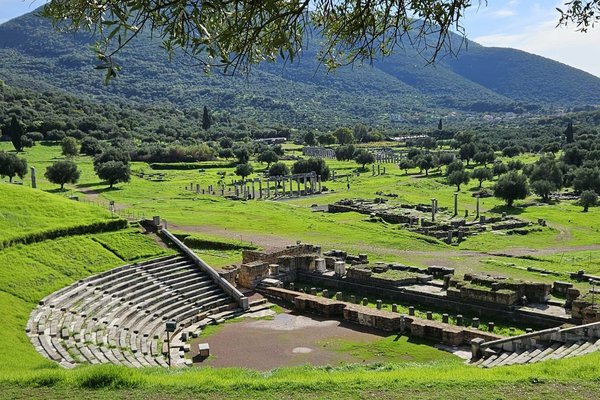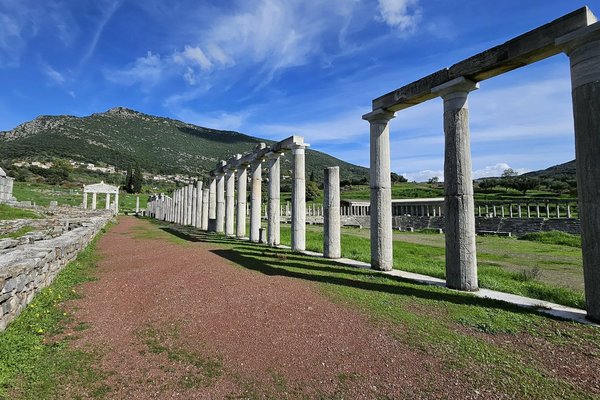Greece
Archaeological site of Ancient Messene
Ancient Messene is located in the southwest of the Peloponnese at the foot of Mount Ithome and was the capital of the Messenia region in ancient times.
The area of Messene was not destroyed or overbuilt by later settlements. The surviving remains date mainly from the 4th century BC, the period after the end of Sparta's hegemony. The most significant remains are the ruins of the theatre, the stadium and the temple of Asclepeion.
Site Info
Official Information
- Full Name
- Archaeological site of Ancient Messene (ID: 5859)
- Country
- Greece
- Status
-
On tentative list 2014
Site history
History of Archaeological site of Ancient Messene
- 2014: Added to Tentative List
- Added to tentative list
- Type
- Cultural
- Criteria
Links
- UNESCO
- whc.unesco.org
All Links
UNESCO.org
- whc.unesco.org — whc.unesco.org
Community Information
- Community Category
- Archaeological site: Ancient Greece
Travel Information
Recent Connections
News
No news.
Recent Visitors
Visitors of Archaeological site of Ancient Messene
- Afshin Iranpour
- Alexander Lehmann
- Ammon Watkins
- Andrew_Kerr
- Argo
- bergecn
- CeeMon
- christof
- Christoph
- Christravelblog
- Cluckily
- Daniel Gabi
- David Berlanda
- Dimitar Krastev
- Farinelli
- Francky D'Hoop
- Hadrianus
- henrik_hannfors
- henryjiao18
- Hubert
- Jarek Pokrzywnicki
- Jonas Kremer
- Lisu Marian
- Monica Tasciotti
- nan
- Patrik
- Reisedachs
- sncjob
- Tevity
- Tim Allen
- tony0001
- Tsunami
- Twobaconsandaboston
- Yevhen Ivanovych
Community Reviews
Show full reviewsTwobaconsandaboston
I'm amazed it's still only a Tentative site
Archaeological site of Ancient Messene (On tentative list)
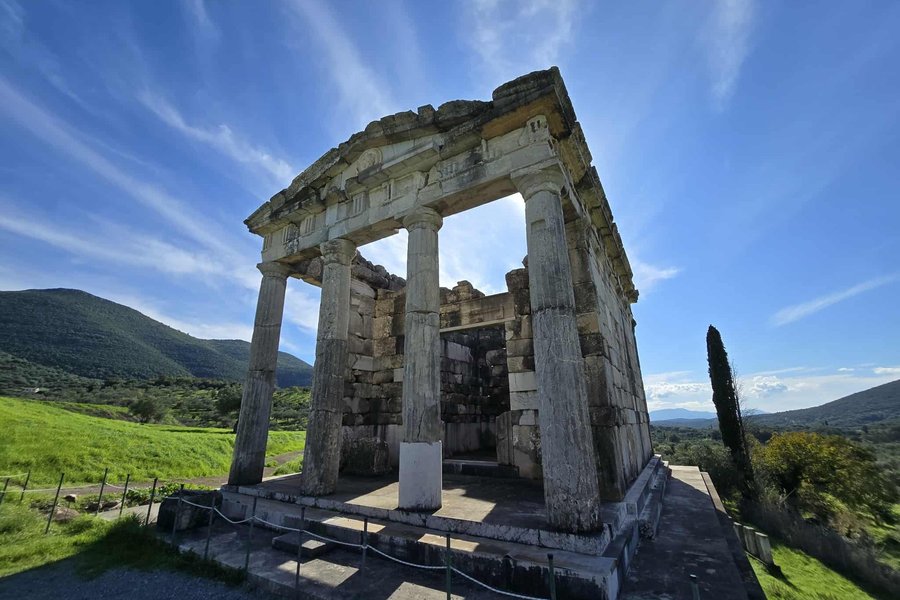
The Peloponnese Region of Greece is an archaeologists dream location. Already inscribed with 5 locations of great importance, this location equals those. On the tentative list since 2014 it still holds its weight amongst these sites and should be on your visit list. I am not sure why it has not been inscribed to date.
I was contemplating not even visiting, however had a spare day with the hire car and rather than tick off more tentative Medieval Bastioned Fortifications of Greece or Ancient Theatres of Greece (visited a few now) we visited this singular location as a side trip as we were travelling up from Sparti to Patras to ferry out of Greece. I am so glad we did; it is seriously underrated.
15 Euro entry fee to visit, which is middle of the road for prices across Greece to visit these sites, however you do get your money's worth at this site with the amount of ruins and large footprint across the protected area. There is no 'museum' part of the complex, the 'museum' is the ruins themselves with a variety of information boards explaining the site and area. It is a dog friendly location, and we were only asked if our dog was vaccinated, which is a first for us. We spent about 3 hours on the site itself and involved a fair bit of walking and exploring, so if visiting, make sure you take some water with you.
With a lot of the archaeological sites I …
Keep reading 0 commentsGeo.Mav
Archaeological site of Ancient Messene
Archaeological site of Ancient Messene (On tentative list)

I live in the area. I have to say that the Ancient Messene Archeological Site is the equivalent of what you would like to visit and see in Ancient Sparta. The monuments from Spartans have been destroyed or stolen during the centuries. Now there's almost nothing left in Sparta. On the other hand, the Messinians have not been "famous" like Spartans, so there is much to see. The poor people of Messinia had to endure the constant wars with Spartans. So, instead of visiting Sparta you can visit the Archeological site of Ancient Messene and learn both for Spartans and Messinians. The Archeological Site has many ancient buildings (theaters, stadium, etc). The site is a 20-30 minutes drive from the small Kalamata International Airport or 40 minutes drive from Kalamata.
Tips:
Rent a car. Access by public transportation (1 bus) is not recommended and not convenient.
Visit the Arcadian Gate about 1-2 kilometers away. Do not forget to continue driving about 1 km and see the remains of the walls and the towers!
Always wear hat, sunscreen and have a bottle of water during the summer months. Avoid the hours 11am-17pm for a visit. Go earlier or later.
Wear comfortable shoes. No high-heels in Greek archeological sites.
During the summer months, some performances or concerts are organized in the theaters. It is a unique opportunity to combine a visit to the archeological site in the afternoon and stay there and watch the performance during …
Keep reading 0 commentsbergecn
Archaeological site of Ancient Messene
Archaeological site of Ancient Messene (On tentative list)

Back to Ancient Messene after many years. What a difference! Today (in 2022) it easily competes with Delphi and Olympia as a well kept, well presented and rich archaeological site that deserves to be included in the World Heritage List. It received the European Union Prize for Cultural Heritage in 2005 & 2011.
Ancient Messene was an important Hellenistic, Roman and Early Byzantine city. The site is stretched out in the valley below Mount Ithome, 28 km north of Kalamata in the Peloponnese. The first organised settlement on Mount Ithome dates back to the 9th century BC - with earlier human presence in the Late Neolithicum and Early Bronze Age. After a series of wars with Sparta between the 8th and 5th centuries BC the settlement on the mountain was given up by its inhabitants. In 369 BC General Epameinondas from Thebes founded the city below in the valley as the capital of independent Messenia and built according to the urban planing principles of Hippodamus of Miletus. It served as an important political, cultural and religious centre well into late antiquity when it was abandoned after being sacked by the Goths in 395 AD.
The 2nd century AD comprehensive description of the city by ‘the father of European travel writing’ Pausanias has been the guide for archaeologists who have found, identified and partly restored many of the public buildings with financial support from the European Union and private donors.
Ancient Messene is not far from the Corinth-Kalamata …
Keep reading 0 commentsAmmon Watkins
Archaeological site of Ancient Messene
Archaeological site of Ancient Messene (On tentative list)
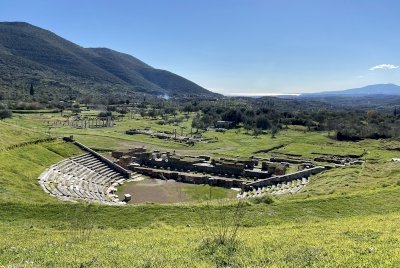
We visited this site in Feb 2022 en route from the Mani peninsula to Olympia. I would definitely recommend a visit and a car to get there. Our GPS took us there via some rather obscure back roads and our first glimpse of the site was from above as we came down from the mountain to the east. Our visit on site was equally pleasant as the ruins are well kept and laid out. I think what I liked the most was that each element of the former city is spaced out and clearly identifiable and I could get a feel for the full layout without getting an impression of clutter or trying to cut through more modern development like most other ruins. As mentioned in the previous reviews the best is saved for last. At the far end is the fantastic stadium.
As well presented as the site is there is still evidence of much more left to be uncovered. The nearby museum is small with just a few local artifacts. As for the fortifications, it is possible to see some elements of the walls in the distance from the ruins. We left by driving to the west and after a km or so passed through the large Arcadian gate and got a good look at the walls.
This should be an easy addition to the WHS list if Greece ever decides to submit it.
Keep reading 0 commentsnan
Archaeological site of Ancient Messene by Nan
Archaeological site of Ancient Messene (On tentative list)
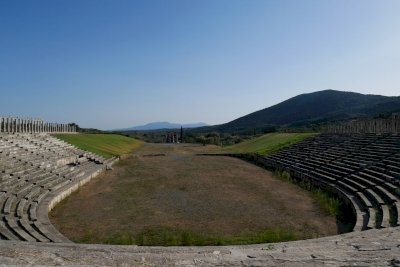
Travelling without car can be a bit challenging in Greece. Each district has their own local KTEL (bus company). The only priority for each KTEL seems to be to offer frequent connections to Athens. E.g. there are two daily busses to Athens from a village like Andritsaina, but there are only two weekly connections from e.g. Sparti across the mountain range to neighboring Kalatama.
This was the conundrum I faced when planning my visit to Ancient Messene. Generally, I had time for a visit, but I could not work out a leisurely connection. Being in Mystras/Sparti I would have to backtrack to Tripoli. There I would hope (or wait) to catch the bus from Athens on its pee break at the Tripoli bus station. For a trip that would have taken 1h by car, I had to plan 3h by bus. Minimum.
My inclination was to simply skip the site and opt for the easier option of continuing straight via Tripoli to Pyrgos for Olympia. That is, had it not been for the glowing review by Thibault (thanks!). His review peaked my interest, so much so that I didn't want to forego the site. Eventually, I settled on the stressful option of going for the connecting bus to Kalamata and then catching a cab in Kalamata to the site.
It started off rather badly, as the bus from Sparti was really slow. The trip to Tripoli should have taken less than an hour, it took 80min. I …
Keep reading 0 commentsThibault Magnien
Archaeological site of Ancient Messene
Archaeological site of Ancient Messene (On tentative list)
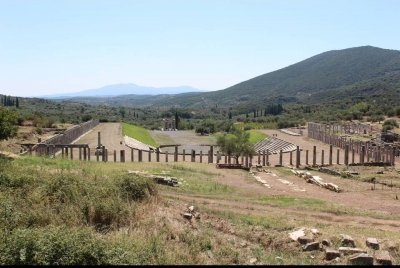
I have discovered Messene (not to be confused with the modern town Messini 20km from there) on my way from Mystras to Bassae, in Peloponnese. Messene was founded in 369 BC and became the capital city of the Messenian state for centuries before falling under Roman rule. The archeological site displays an impressive number or structures including fortifications, a 9,5 km wall with monumental gates and defensive towers, a theatre, several temples and an impressive stadium with facilities. The most impressive part of the fortifications (including so called Arcadia Gate) can be seen on top of the hill few kilometers from the archeological centre. To me, the site is one of the main missing WHS in Greece considering the extensive remains and uniqueness of certain attributes such as the monumental fortifications.
Keep reading 0 comments

